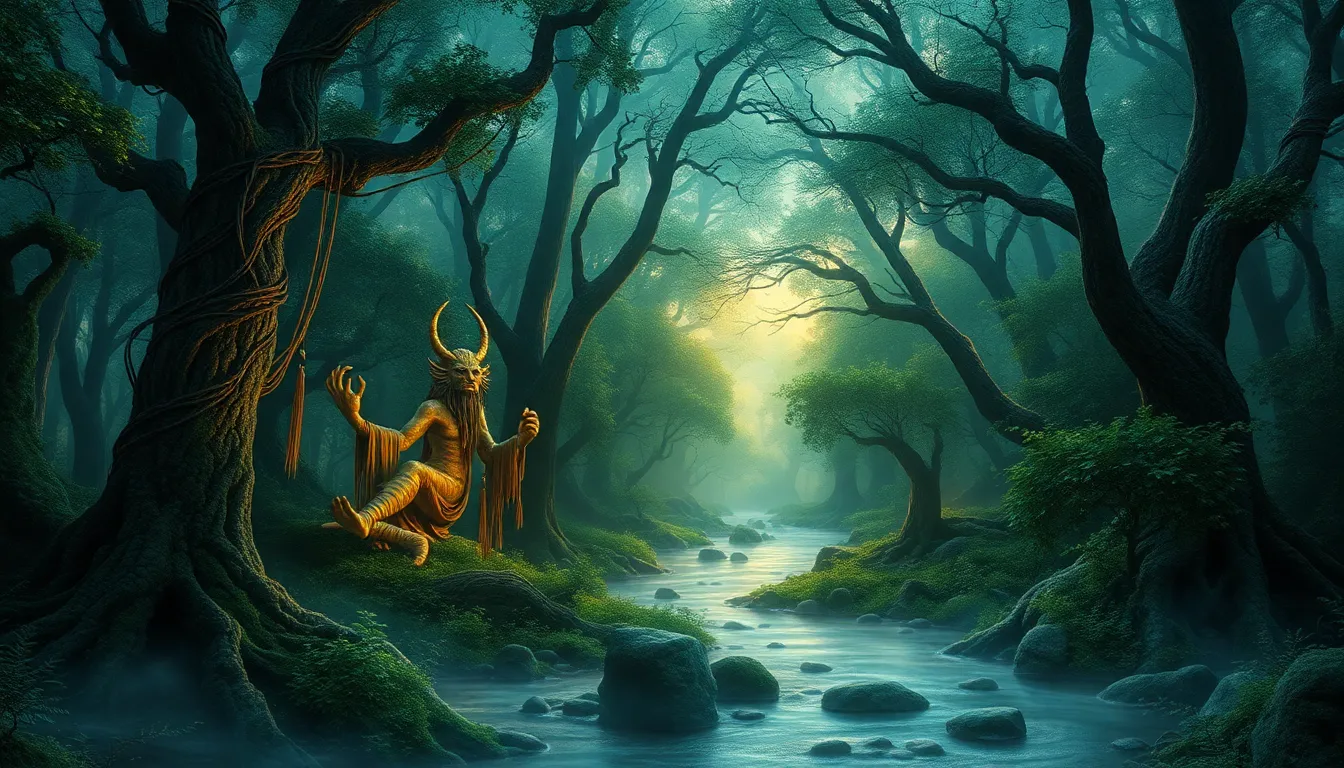The Enchanted Forest: A Realm of Endless Possibilities
1. Introduction: The Allure of the Enchanted Forest
The concept of an enchanted forest has captivated the human imagination for centuries. Defined as a mystical and magical place often filled with extraordinary flora and fauna, these forests are characterized by their ethereal beauty and the presence of fantastical elements. Enchanted forests have been prominent in folklore, literature, and popular culture, serving as settings for adventure, mystery, and self-discovery.
From ancient tales to modern narratives, the enchanted forest often symbolizes a realm where the ordinary meets the extraordinary, allowing individuals to explore the depths of their imagination and the complexities of the human experience.
2. Historical Origins of Enchanted Forests
The origins of enchanted forests can be traced back to ancient myths and legends. They have held cultural significance in various civilizations, including:
- Celtic: In Celtic mythology, forests were believed to be inhabited by fairies and magical beings, serving as places of both wonder and peril.
- Norse: Norse legends feature Yggdrasil, the world tree, which connects different realms and embodies the mystique of ancient forests.
- Native American: Many Native American tribes view forests as sacred spaces, filled with spirits and lessons of life.
Over the ages, the theme of the enchanted forest has evolved, reflecting societal changes and the shifting perceptions of nature and magic. These forests became symbols of mystery, growth, and transformation in various cultural narratives.
3. The Flora and Fauna of the Enchanted Forest
Enchanted forests are often depicted as havens of unique plant life and magical beings. Some notable features include:
- Magical Trees: Trees that can talk, move, or even grant wishes, such as the famous Ents from J.R.R. Tolkien’s works.
- Glowing Flowers: Plants that emit light, creating a surreal atmosphere that enhances the forest’s magical qualities.
In addition to remarkable plant life, enchanted forests are home to iconic creatures:
- Fairies: Often depicted as tiny, winged beings that help or hinder travelers.
- Elves: Mystical beings associated with nature, often portrayed as wise and graceful.
- Mythical Animals: Creatures like unicorns and griffins that embody the fantastical elements of these forests.
The rich biodiversity found in these enchanted realms not only creates a sense of wonder but also serves as a reminder of nature’s beauty and complexity.
4. The Role of Enchanted Forests in Fairy Tales and Folklore
Enchanted forests play a crucial role in many well-known fairy tales. Classic stories such as “Hansel and Gretel” and “Little Red Riding Hood” feature characters navigating through magical woods, confronting dangers and discovering truths about themselves.
These tales often carry deep symbolism and moral lessons:
- Self-discovery: The forest serves as a metaphor for the journey into the self, where characters face challenges that lead to personal growth.
- Good vs. Evil: Enchanted forests often represent the battle between light and darkness, with characters confronting their fears and adversaries.
The impact of storytelling on the perception of enchanted forests is profound, as these narratives shape our understanding of nature and the mystical elements intertwined with it.
5. Enchanted Forests in Modern Fantasy Literature and Media
Contemporary works continue to explore the theme of enchanted forests, often depicting them as settings for adventure and self-discovery. Notable examples include:
- The Chronicles of Narnia: C.S. Lewis’s series features the magical land of Narnia, accessed through a wardrobe and filled with enchanted forests.
- Harry Potter: J.K. Rowling’s universe includes the Forbidden Forest, a place of danger and wonder where characters encounter various magical creatures.
Modern narratives reinterpret traditional themes, presenting enchanted forests as places where individuals confront their fears, learn valuable lessons, and embark on quests that shape their destinies.
6. The Psychological Appeal of Enchanted Forests
The allure of enchanted forests is deeply rooted in the human psyche. The concept of escapism plays a significant role, as these magical realms offer a refuge from the complexities of modern life. Immersing oneself in nature and fantasy can lead to numerous psychological benefits:
- Stress Relief: Spending time in nature reduces stress and promotes relaxation.
- Enhanced Creativity: Enchanted forests stimulate the imagination, inspiring creativity in art, writing, and problem-solving.
Ultimately, enchanted forests foster a sense of wonder, encouraging individuals to explore their inner worlds and the limitless possibilities of their imagination.
7. Enchanted Forests as Tourist Destinations
Many real-life locations capture the essence of enchanted forests, attracting visitors seeking to experience their magic. Examples include:
- Fairy-Tale Themed Parks: Parks like Disneyland feature attractions that bring enchanted forests to life.
- National Parks: Locations such as Redwood National and State Parks showcase breathtaking natural beauty that feels otherworldly.
The rise of eco-tourism has positively impacted conservation efforts, fostering appreciation for these magical settings. Visitors are encouraged to:
- Respect wildlife and natural habitats.
- Practice Leave No Trace principles to preserve the beauty of enchanted forests for future generations.
8. Environmental Significance of Enchanted Forests
Enchanted forests hold ecological importance, serving as vital ecosystems that support biodiversity. They symbolize the need for conservation efforts, representing the delicate balance of nature.
Community initiatives aimed at preserving these environments include:
- Reforestation Projects: Efforts to restore native flora and fauna.
- Awareness Campaigns: Educating the public about the ecological significance of forests and the importance of sustainable practices.
In conclusion, enchanted forests are not merely settings in stories; they are reflections of our deepest desires for adventure, exploration, and connection to nature. As we delve into the realms of enchantment, we are reminded of the importance of preserving these magical landscapes for generations to come.



